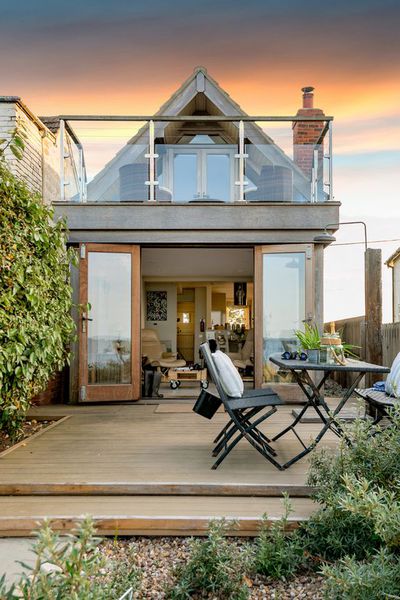
Bokashi compost and sandy carrots – growing and cooking tips from Native
Sawday's Expert
5 min read
Ivan Tisdall-Downes, along with business partner Imogen Davis, runs Native, a Worcestershire restaurant built on their passionately held principles of seasonality and using grown and foraged produce.
Ivan, a self-taught chef who “grew up on Quavers and Wagon Wheels” in south London, has been making waves in the culinary world for years. An early attempt to combine his urban upbringing with Imogen’s more rural youth led to the creation of a pigeon kebab. Later, their squirrel lasagna got so much press that Piers Morgan wanted to eat it live on Good Morning Britain and Ivan ended up on The Great British Menu.
Their move to the Worcestershire countryside has allowed them to create a place that embodies their entire approach to food – an exacting dedication to seasonality and “doing the right thing, not the easy thing.” Alongside a team of gardeners, they manage their land and their menu in harmony, working wonders with what they produce. A stay at Native comes with the unmissable opportunity to savour their ten-course tasting experience and all the fruits of their labour.
We managed to grab a few minutes with Ivan to talk seasonal growing and cooking, so here’s a few tips to get your own garden going.


-
Courgettes and cover crop, for starters
The easiest thing to grow is probably courgettes. You can’t go wrong with those, really. The guys here had an absolute glut of them when we started. But my main piece of advice, especially on new ground, would be to sow cover crop, random mixed seeds. It feeds the soil and it’s great watching what comes up. Winter is the perfect time to do it. I scattered a handful on my allotment and then there were radishes, lettuces, carrots. I’m still picking carrots out of it now, that self-seeded.
-
Carrots in sandy soil
Carrots need loose, sandy soil or they won’t grow. Or rather, they won’t grow supermarket straight. If they hit a stone, they’ll grow round it, and you get that gnarly shape. They still taste the same, but some people find it off putting.


-
Bokashi composting
We just started using a Japanese system of composting called Bokashi, which has been fantastic. You can put food scraps, fish bones, anything into your compost. You layer everything with bran and seal it in a bucket and anaerobic digestion sort of pickles it and turns it into incredible stuff for the garden. You also get a kind of runoff that you can put in your watering can.
-
Long term planning
There are certain things we don’t grow, like onions, because supplying the restaurant with them would take up all the space we have. We think ahead to what we want to grow and plant not just to get what we need but to keep the soil healthy. You can’t just keep growing the same things year on year, certainly not any kind of cash crop because they just take all the goodness out of the ground. It’s important to know what each plant uses and gives, but you can generally use cover crop again to restore the soil.


-
Pairing ingredients
The old saying is “what grows together goes together” and while it’s not always true, it’s worth trying some pairings based on what you see. In January, the first two things that grow here are rhubarb and rosemary, so we started making desserts that used them both and they went down really well.
-
Get creative
I’m never frustrated when there’s not much from the garden to work with. It’s harder in the height of summer when there are so many berries and so much produce that I can’t fit it all on the menu. It’s when we had limited ingredients that we started putting beetroot in our brownies or making Jerusalem artichoke desserts, caramelising them for ages. There’s always a combination of flavours or ingredients that can make something work.
Receive our guides, destination ideas and insider travel tips straight to your inbox.
Sign up >Share this article:
You might also like
French city breaks for foodies

Christopher Wilson-Elmes
Sawday's Expert
5 min read
4 days in south Wales: A tasting tour of Tenby and beyond

Christopher Wilson-Elmes
Sawday's Expert
5 min read
A chef’s guide to Yorkshire by Sam Varley

Christopher Wilson-Elmes
Sawday's Expert
5 min read











